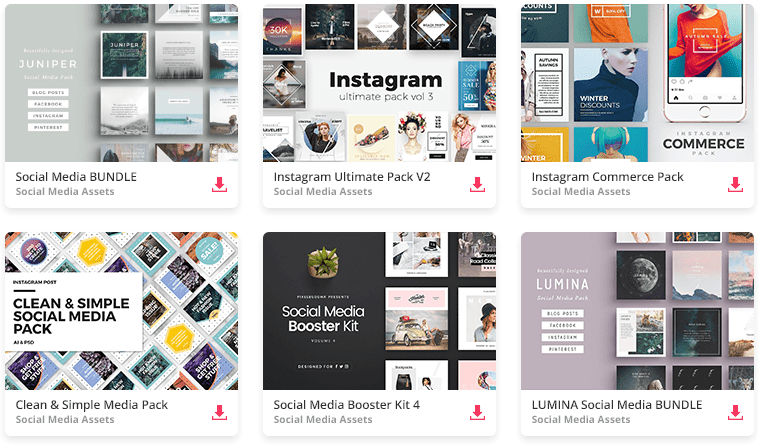3 Simple Steps To Create Strong Brand Guidelines
As a content creator, I’ve learned that building onto a project is easy once the idea lightbulb goes off. Lots of bits and pieces start coming together, and what started as a simple concept becomes something much bigger in no time.
However, as time goes by, ideas change and evolve, they get scrapped or even forgotten. That’s why taking on important projects — such as building a brand — requires a constant that will serve as a support system.
This is where the power of brand guidelines comes to save the day. They’re here to provide a clear direction and contribute to a system of quality control for everything brand related.
Your brand guidelines should hold answers and important points about the purpose and core identity of the organization.
To create such rules, you need to deep dive into the purpose of the brand, and that can be an easy task if you’re asking the right questions.

Begin with a vision
All brand activities stem from the vision that you have for your brand. A clearly defined vision describes everything that someone needs to know about a brand, no matter if they’re a long-time insider or they are hearing about it for the first time.
The vision is a key brand element, and it is not something that’s just for the founder and a few higher-ups to know and keep in their heads.
It is something that everyone in your network should recognize and care about. That includes your whole team, your partners, and your customers.
That is where the Q&A session begins.
What are we working toward achieving, and why?
To know the answer to this question is to know what traits and values your brand needs to develop to succeed. It will make the decisions easier when you’re trying to choose a direction along the way.
Connect and communicate your brand identity
The work on your brand guidelines starts internally, but ultimately, it’s all about the effort that you’re putting towards building great relationships.
To give life to your vision, you need to be able to successfully communicate your brand identity and everything that it stands for. That is why the next section of your brand guidelines is all about the essence of your brand’s identity.
All communication naturally happens through connection. There are three important ways that your audience should be connected to your brand: emotionally, intellectually, and visually.

Emotional Connection
Emotional connection happens when strong feelings arise about the subject in question. It gives the customer a reason to choose a brand beyond the point of simple consumption.
What should the brand feel like?
With the wide variety of products, services, and information out here to choose from, emotional investment has a big factor in consumer decisions.
The feelings that the consumer attaches to a brand is the invisible feature that can make or break that relationship.
Intellectual Connection
Intellectual connection happens through relevant mental stimulation. It comes in the form of ideas and thoughts that are important to both parties.
What should the brand sound like?
Self-expression is a large part of modern culture. Just like individuals, consumers expect brands to take a stand and contribute to their community in a meaningful way.
Depending on the type of brand in question, this can range from important topics — such as social or political standing — to something less serious or even playful.
Visual Connection
Visual connection happens through the use of visual cues and imagery. The way that a brand looks can contribute to setting the mood from the start.
What should the brand look like?
The colors, visual language, and aesthetics that you use to paint your brand identity, products, and content should be well designed and coherent with your values.
I won’t go into a debate about the order of importance for these three, because it doesn’t matter. For a brand to communicate its vision successfully, all of them need to work well together.
Your job is to plan for all three and to build a setup that gives potential consumers a chance to react and discover a connection with your brand.

All the Social Media Graphics you need and many other brand design elements, are available for a monthly subscription to Envato Elements.
The subscription gives you unlimited downloads from a massive and growing library of 1,500,000+ Social Media Graphics & Design Assets that can be downloaded as often as you need (stock photos too)!
Digital Brand Blueprint is an affiliate partner for Envato. If you visit their page through our link and subscribe we will receive a small commission at no extra cost for you. This keeps the website growing
Create your own formula
When you have a vision and a plan on how to communicate it, all that’s left is to create a formula for application. In other words, you need to define the ways that you’ll be practicing your vision to create results in the world.
How can we apply our vision to everything we do?
You create these results through everything you do with your brand — the products you offer, the content you produce, how you communicate, what you contribute to your network, and so on.
How to create and apply brand guidelines
Here are a few ideas on how you can create an application formula for your guidelines:
- Create a “Style Guide” that shows how brand visuals should be used.
- Create a “Do’s and Don’ts List” to outline rules that everyone should follow.
- Create a “Gallery of Examples” about how you work and what future projects have to follow-up.
- Create a “Highlights List” that describes your vision in a few words for social profiles.
- Create a “How-To Tutorial” about the brand presentation in content and ads.
Creating, documenting, and practicing these guidelines is unique to your brand. It is almost like setting goals about the impact that you want to have on your community and the world.
That means that there is no one-size-fits-all framework that you must use to build a strong drive behind your brand. Instead, focus on your vision, find the right way to connect with your people, and go from there.
